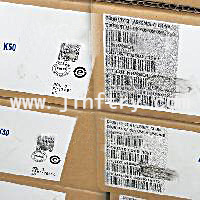What is DM3725CBPA,DM3725CBPA Datasheet


What is DM3725CBPA
Texas Instruments Part Number DM3725CBPA(Embedded - DSP (Digital Signal Processors)), developed and manufactured by Texas Instruments, distributed globally by Jinftry. We distribute various electronic components from world-renowned brands and provide one-stop services, making us a trusted global electronic component distributor.
DM3725CBPA is one of the part numbers distributed by Jinftry, and you can learn about its specifications/configurations, package/case, Datasheet, and other information here. Electronic components are affected by supply and demand, and prices fluctuate frequently. If you have a demand, please do not hesitate to send us an RFQ or email us immediately [email protected] Please inquire about the real-time unit price, Data Code, Lead time, payment terms, and any other information you would like to know. We will do our best to provide you with a quotation and reply as soon as possible.
DM3725CBPA Specifications
- Part NumberDM3725CBPA
- CategoryEmbedded - DSP (Digital Signal Processors)
- ManufacturerTexas Instruments
- DescriptionIC DGTL MEDIA PROCESSOR 515FCBGA
- PackageBulk
- SeriesTMS320DM37x, DaVinci™
- TypeJinftrytal Media System-on-Chip (DMSoC)
- Interface1-Wire®, EBI/EMI, I²C, McBSP, McSPI, MMC/SD, UART, USB, USB OTG
- Operating Temperature-40°C ~ 105°C (TJ)
- Mounting TypeSurface Mount
- Package / Case515-WFBGA, FCBGA
- Supplier Device Package515-POP-FCBGA (12x12)
- Clock Rate800MHz
- Non-Volatile MemoryROM (32kB)
- On-Chip RAM384kB
- Voltage - I/O1.80V
- Voltage - Core1.10V
- Package_case515-WFBGA, FCBGA
Application of DM3725CBPA
DM3725CBPA Datasheet
DM3725CBPA Datasheet , Bulk,TMS320DM37x, DaVinci™,Jinftrytal Media System-on-Chip (DMSoC),1-Wire®, EBI/EMI, I²C, McBSP, McSPI, MMC/SD, UART, USB, USB OTG,-40°C ~ 105°C (TJ),Surface Mount,515-WFBGA, FCBGA,515-POP-FCBGA
DM3725CBPA Classification
Embedded - DSP (Digital Signal Processors)
FAQ about Embedded - DSP (Digital Signal Processors)
-
1. What are the two types of DSP?
DSP (digital signal processor) is mainly divided into two types: fixed-point DSP and floating-point DSP. The main difference between fixed-point DSP and floating-point DSP is that they process data in different ways and formats.
Fixed-point DSP uses fixed-point number format for calculation. This format directly stores data and exponents in integer form in memory, eliminating multiplication and division operations in floating-point operations, thereby increasing the calculation speed. Fixed-point DSP chips are relatively low in price and power consumption, but the calculation accuracy is relatively low.
Floating-point DSP uses floating-point format for calculations. This format can represent large or small numbers, with high calculation accuracy, and is suitable for occasions that require high-precision calculations. However, floating-point DSP chips are expensive and consume a lot of power. -
2. What is built-in DSP?
Built-in DSP is a technology that combines digital signal processing (DSP) functions with power amplifiers. It not only has the power amplification function of traditional amplifiers, but also accurately processes and adjusts audio signals through DSP chips to provide a higher quality music experience.
The core advantage of built-in DSP lies in its powerful audio processing capabilities. Through DSP technology, audio signals can be optimized and managed to achieve active frequency division, delay processing, EQ debugging and other functions, thereby improving the performance of the audio system and making the sound clearer and more pleasant to listen to.In addition, DSP amplifiers also support parameter adjustment through computers, mobile phones and other devices, providing more flexible audio management solutions. -
3. What are the three types of signal processors (DSP)?
There are three main types of signal processors (DSP): enhanced DSP, VLIW structure, superscalar architecture, and SIMD structure hybrid structure.
Enhanced DSP: This DSP has a highly optimized instruction set and structure that can quickly execute common signal processing algorithms. They are often used in applications that require high-speed signal processing.
VLIW structure: DSP with VLIW (Very Long Instruction Word) structure can execute multiple instructions in one cycle, thereby increasing processing speed. This structure is suitable for applications that require high parallel processing capabilities.
Superscalar architecture and SIMD structure hybrid structure: These structures combine the advantages of superscalar and SIMD (Single Instruction Multiple Data) technologies, can process multiple data in a single instruction cycle, and are suitable for application scenarios that require high-performance computing.







